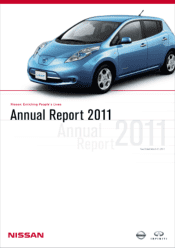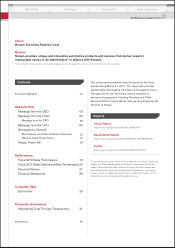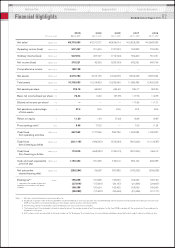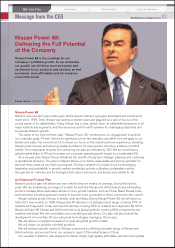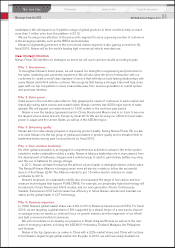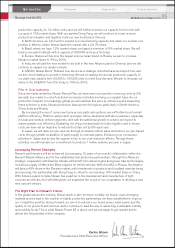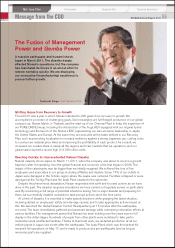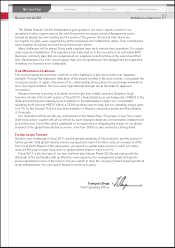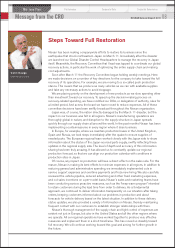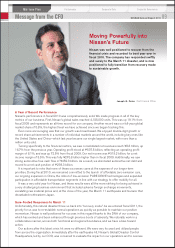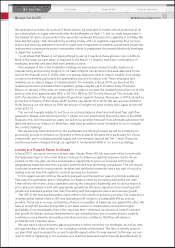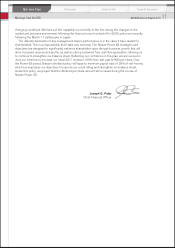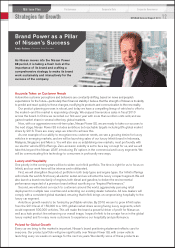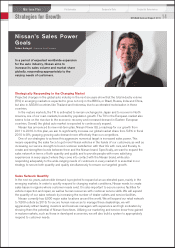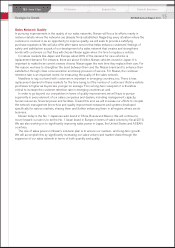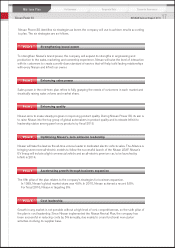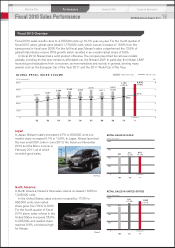Nissan 2011 Annual Report Download - page 9
Download and view the complete annual report
Please find page 9 of the 2011 Nissan annual report below. You can navigate through the pages in the report by either clicking on the pages listed below, or by using the keyword search tool below to find specific information within the annual report.
Nissan has been making companywide efforts to restore its business since the
earthquake that struck northeastern Japan on March 11. Immediately after the disaster
we launched our Global Disaster Control Headquarters to manage the recovery in Japan
itself. Meanwhile, the Recovery Committee that I lead was tapped to coordinate our global
recovery actions, in particular the work of optimizing the entire supply chain and making
cost adjustments.
Soon after March 11 the Recovery Committee began holding weekly meetings. Here
we made decisions on a number of key directions for the company to take toward the full
recovery of its operations. For example, we are moving to a so-called push production
stance. This means that we produce as many vehicles as we can with available supplies
and take any necessary actions to avoid stoppage.
We are placing priority on the development of new products as we slow spending other
than investment toward our recovery. To speed up the decision-making process on
recovery-related spending, we have modified our DOA, or delegation of authority, rules for
a limited period. And across the board we have moved to reduce expenses. All of these
committee decisions have been swiftly broadcast throughout the Nissan organization.
Japan was, of course, the nation directly damaged by the March 11 disaster, but the
impact on our business was felt in all regions. Nissan’s manufacturing operations are
thoroughly global in nature, and disruption to the supply structure in Japan spreads
quickly through our supply chain all around the world. In the past months Nissan has been
implementing countermeasures in every region where it does business.
In Europe, for example, where we maintain production bases in the United Kingdom,
Spain and Russia, we took steps immediately after the quake to ensure supplies of
needed parts. The European regional team worked closely with the Japan side to share
information about the status of the Japan-sourced parts supply, swiftly reflecting these
updates in the regional supply side. The level of depth and accuracy of this information
sharing has been truly amazing. It has allowed us to constantly update our regional
production forecast, so that we can align our production calendar with conditions in
production sites in Japan.
Of course, any impact on production will have a direct effect on the sales side. For this
reason, Nissan is making its best efforts to minimize expenses in all regions. In addition to
reducing general and administrative spending, we immediately implemented cuts in
service support expenses and overtime payments and froze new hiring. We also carefully
reviewed the vehicle pipeline, reduced advertising and other fixed marketing expenses,
and cut sales incentives on a per-model basis. Nissan’s sales and marketing teams have
been conducting various proactive measures, such as the “keep warm program” intended
to retain customers during the lead time from order to delivery. As a fundamental
approach, we continued to deliver information transparently on our situation after taking
orders, keeping customers informed about our problems in production and about
forecasts for vehicle delivery based on the latest situation. In addition to these delivery
status updates, we also provided a variety of information on Nissan, thereby maintaining
frequent contact with our customers to establish stronger relationships with them.
Nissan’s thorough management of the supply chain and tight control of expenses are
evident not just in Europe, but also in the United States and all the other regions where
we operate. All our regional operations have worked together to produce very effective
measures and implement them in a short timeframe. This has moved us steadily toward
full recovery. We will continue working toward this goal and aiming for further growth in
the future.
Colin Dodge
Chief Recovery Ofcer
Steps Toward Full Restoration
Message from the CRO
Mid-term Plan
Performance Corporate Data Corporate Governance
08
NISSAN Annual Report 2011

